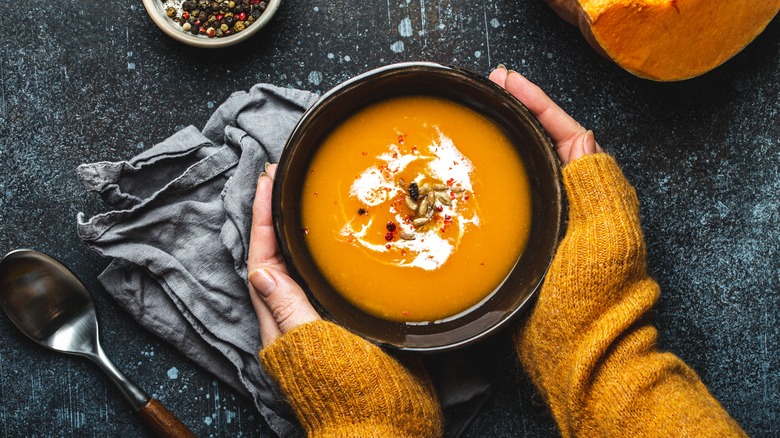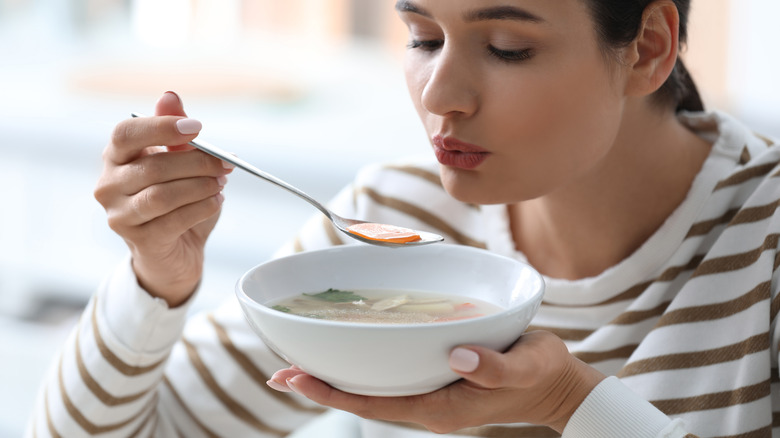Why The Type Of Bowl You Serve Soup In Really Does Matter
In sickness and in health, in cold or warm weather, soup is always guaranteed to satisfy empty stomachs and soothe the soul. From the classics like chicken noodle and French onion, to the not-so-ordinary soups like spicy black bean, lemony chicken orzo, vegetable beef barley, and even creamy tomato tortellini, this dish's versatility allows you to enjoy it whenever you please. However, there are some common kitchen mishaps that can occur while attempting to whip up your favorite soup.
According to Good Housekeeping, the seven most common mistakes people make when cooking soup are cooking over too high of heat, not salting the liquid enough, skimping out on the water, cooking the vegetables too much, adding in the tomatoes too soon, forgetting about garnishing, and not investing in a pressure cooker.
While all of these factors play a key role in your end product, there is one more surprising thing that can determine how much you enjoy your soup masterpiece — and that is the type of dish you serve it in.
It determines the temperature
According to Real Simple, the bowl determines the experience. If you're wanting to savor the soup and slurp it slowly, a deep and narrow bowl is best. Meanwhile, shallow bowls give quite the presentation — great for an Instagrammable moment and making for a wonderful nestle to garnishes and bread toppings. But with a shallow bowl comes more surface area, which means your soup will get cold much quicker.
However, there is an upside to using shallow bowls, dishes, or containers. When it comes to cooling a soup, keeping it in the tall narrow pot that it cooked in may take it forever to reach room temperature. Instead, AARP suggests simply ladling the soup into shallow containers, which will cut your cooling time down tremendously. Furthermore, the University of Minnesota Extension says that stirring each shallow container will help it to cool even more quickly. This is important not only when saving you time, but keeping you and your family safe. Unwanted bacterial growth can sneak up on you, and proper cooling methods can prevent this.
The University of Minnesota Extension states that when cooling down your soup before storing it in the refrigerator, the soup should reach 70 degrees Fahrenheit within two hours of sitting out or sitting in an ice bath, and 40 degrees Fahrenheit within four hours of sitting out. After four hours, it's time to go into the refrigerator, as any longer than four hours creates the perfect environment for bacterial growth.

